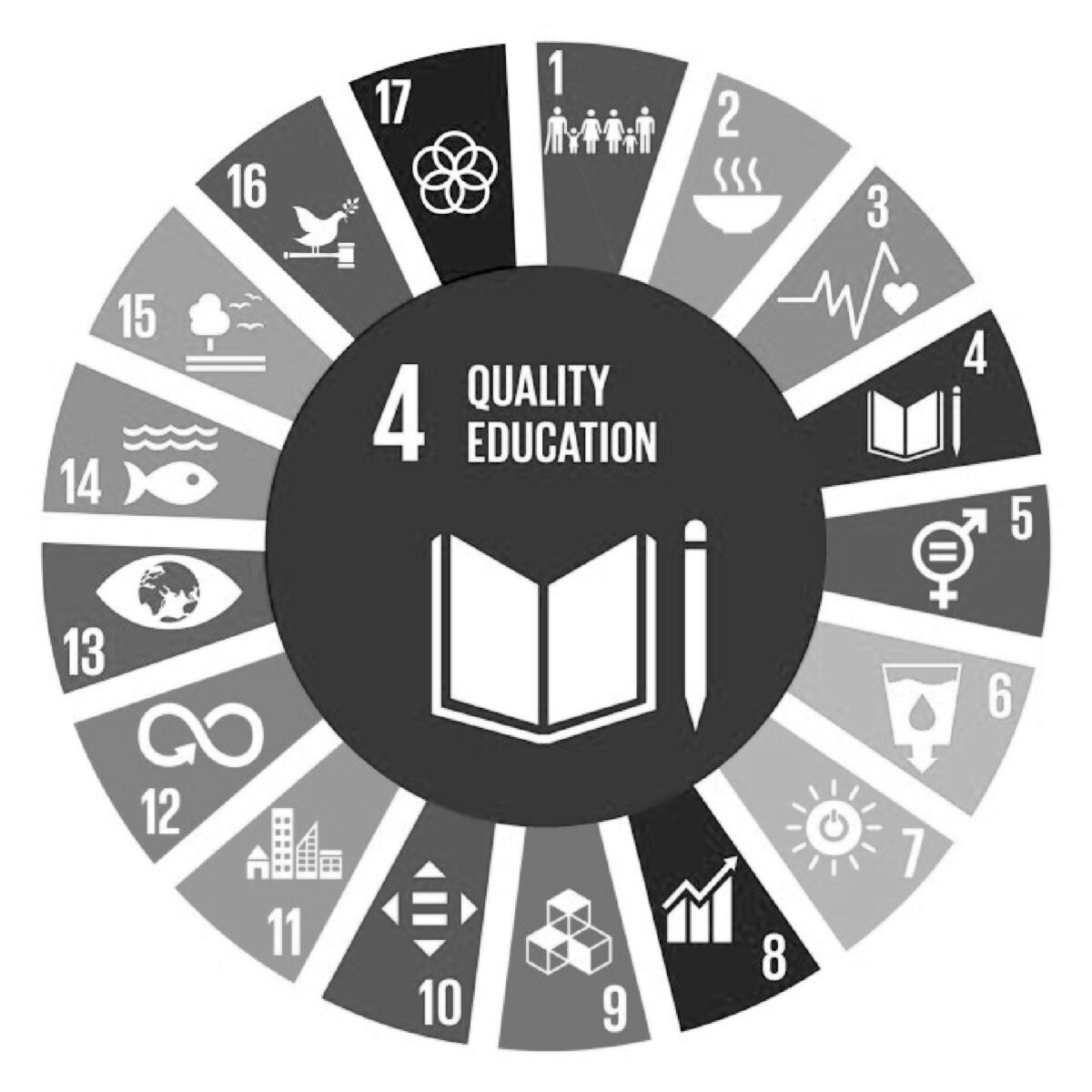Oasis: Optimal Academic Strategies in Students
Challenge 4: Statistical data to promote Quality Education
Oasis: Optimal Academic Strategies in Students
Yonsei University | Seoul, South Korea | YA-KR-2
Due to cultural, environmental, and economic constraints, Ghanaian parents often face challenges in making informed, long-term educational decisions for their children. We aimed to develop a data-driven intervention to empower parents to help optimize their children’s academic trajectories. A comprehensive understanding of the Ghanaian educational landscape was established through literature review and Ghana 2021 Population and Housing Census data. This was made possible through our collaboration with the Ghana Statistical Service (GSS), with whom we facilitated three 30-minute co-design sessions to develop feasible solutions. We identified key barriers that hinder optimal educational decision-making, such as competing priorities, misconceptions about education, and limited access to comprehensive school information. These factors affect Ghanian’s decision-making and can undervalue the long-term benefits of education. We propose Oasis, a comprehensive child education consulting service, to address these challenges. Oasis includes a voice-based interactive education consulting agent, a school information system, an online parent community, and an AI-based child education roadmap. By providing parents with the tools and information necessary to make informed decisions, Oasis aims to improve children’s academic outcomes, reduce dropout rates, and contribute to achieving Sustainable Development Goal 4 (SDG4; Quality Education) by providing parents with the tools and information necessary to make informed decisions.
The Problem
The Challenge
The objective of our project, which is of significant importance, was to develop a data-driven process, product, website, or similar output that extracts data from historical education data and the 2021 Population and Housing Census data. This was done to identify regions with the best education outcomes for parents, considering costs, and to provide them with the necessary information to make informed decisions about their children’s education.
GSS wanted students to leverage emerging technologies, such as AI, to predict the outcome of data, using census and education data to inform parents’ decisions about choosing the best education facility for their children.
What is Quality Education?

The United Nations has already stated that their Sustainable Development Goal 4 (SDG4), “Ensure inclusive and equitable quality education and promote lifelong learning opportunities for all,” is one of the crucial bases of most other SDGs (United Nations, n.d.). Education is especially significant as it determines the minimum proficiency level in reading, which can catalytically impact the whole community and the future generation. Our project aims to contribute to this goal by providing parents with the tools and information necessary to make informed decisions about their children’s education.
Educational Context in Ghana
According to ACET (2022), Ghana has been categorized as a lower-middle-income country since 2010. Additionally, its population is anticipated to increase to 37.9 million by 2025 from 27 million in 2014. However, this growth has yet to be accompanied by rapid job creation, particularly for the youth, with the unemployment rate at 16.9 percent in 2015 (ACET, 2022). Out of the 200,000 people entering the labor force annually, only 20,000 secure jobs in the formal sector, making it imperative for more young people to have the skills and knowledge to create innovative and productive employment (ACET, 2022).
To address this pressing issue, Ghana’s education system and policies must be strengthened to ensure that relevant skills for the Fourth Industrial Revolution (4IR) are imparted, particularly at the secondary level (ACET, 2022). UNICEF pointed out that the school’s enrollment rate is also a problem, as according to the 2010 national census, one out of every four children in the kindergarten age range was not in preschool (UNICEF, n.d.). Our project aims to address this issue by ensuring that students get the best chance they can by encouraging them to pursue their dream goals.
Findings from Literature
Considering Ghana’s national background, it is crucial to consider factors influencing dropout rates and academic performances to enable parents to choose the optimal education facility for their children. However, as such interpretations are based on qualitative research and case studies, there is a need to consider that those cases and literature reviews do not directly indicate the whole nation.
School dropouts, which indicate the suspension of education, occur due to various multi-faceted factors. The first to point out is about parental values. According to Donkor (2010), due to parents’ personal experiences and their social experiences, there is a lack of perceiving (1) the relationship between education and future economic well-being and (2) their roles when it comes to children’s education. Awareness of parents’ empowerment when making decisions is another factor (Donkor, 2010), and the part that parents do not prioritize children’s education (Adam et al., 2016) is another parental factor.
Family system-related factors are also related to dropout rates. Adam et al. (2016) also presented factors that influence dropout in rural areas in Ghana. Child labor was actively done as children’s daily income is crucial to solving poverty issues and sustaining the family (Adam et al., 2016). A high dependency ratio indicates that high financial costs due to many children often adversely affect education (Amagnya, 2020). There are also factors associated with schools per se. Long distances to school, sometimes school environments, and teachers’ punishment are responsible for school dropouts (Adam et al., 2016).
Moreover, several factors affect academic performance. Lack of school fees, sponsorship, and child labor are representative socio-cultural and economic factors for low school enrollment (Okeke et al., 2008). Long distances to school, for example, primary schoolers taking about 30 minutes, are another factor that affects education (UNESCO, 1991). Considering the school level, the lack of teachers, educational facilities, and resources is also crucial (UN, 2015).
Findings from Ghana 2021 Population and Housing Census Data
IBM SPSS Statistics Data Editor was utilized for data cleaning and analysis. We applied the correlation method to check the association among primary variables and the regression method to check whether one variable affects the other. The main results are as follows.
First, the population out of school was not significantly associated with unemployment rates, which means the association between education and work is socially uncertain. For all age ranges (15-19 years old, 20-24 years old, 25-29 years old, 30-34 years old), ‘unemployment rate who have never been to school’ and ‘the number of those who attended in the past’ was not significantly correlated (Refer to the table below). Also, the ‘unemployment rate of those who have never been to school’ and ‘the number of those who never attended’ were not significantly correlated. Regression results also revealed that the number of those who attended school in the past and who never attended school did not significantly affect the unemployment rate for all age ranges. This result could be drawn from the fact that many job opportunities in Ghana are not directly linked with education status, as most are engaged in agriculture or the mining industry. It also implies that the Ghanaian educational environment can lead parents to misunderstand that their children’s education may not be related to the future economic well-being of their family. It was noticeable that the correlation between the population out of school and unemployment rates showed a pattern that was not easily shown.
| Age Range | 15-19 | 20-24 | 25-29 | 30-34 |
| Correlation Coefficients | -.097 | -.052 | -.023 | .003 |
| Age Range | 15-19 | 20-24 | 25-29 | 30-34 |
| Regression Coefficients | -6.840E-6 | -8.269E-7 | -2.371E-7 | 3.05E-8 |
As a result, the overall enrollment and attendance did not lead to the next level of education. Still, the enrollment and attendance rates of appropriate age groups led to the next level of education. The fact that higher Net Enrollment Rate (NER) positively influenced transition rates reflects the crucial role of the appropriate age group in the education system. Therefore, it is essential to prioritize timely school entry at the proper age level, ensuring that students follow the educational roadmap designed on time. Age-appropriate school admissions need to be facilitated to support academic persistence and success.
According to the correlation results, transition rate was positively associated with the total Net enrollment rate (r = .10, p < .01) and Net attendance rate (r = .09, p < .01) but was not significantly associated with total gross enrollment rate and gross attendance rate. Regression results indicated that a higher Net enrollment rate had significant effects on the transition rate (b = 0.17, p < .01), and a higher Net attendance rate had a substantial impact on the transition rate (b = 0.19, p < .01). However, as the correlation coefficient among variables was small, it is crucial to consider whether there are people who give up receiving education and turn to the job market as soon as possible.
Our Target
Our target users are parents with multi-children in Ghana seeking the optimal educational path for their children as they transition to the next level of schooling (e.g., from middle to high school). They aim to find the best educational facilities to secure promising careers and contribute to the family’s financial well-being. However, due to demanding work schedules and other priorities, they need more time and interest in dedicating to their children’s education. This makes it challenging for them to make informed and appropriate educational decisions. Consequently, they demand personalized information to help them identify the best school choices for their child efficiently and effectively.
Problem statement
Parents must carefully consider various factors to optimize children’s educational trajectories and seek long-term academic success. Unfortunately, Ghanaian cultural and environmental contexts often impede parents from making comprehensive, long-term decisions when selecting their children’s educational facilities. This stems from (1) parents’ other competing priorities, such as labor, local culture, traditional beliefs and ceremonies (Appiah-Kubi & Amoako, 2022), and (2) misconceptions about education (Levine-Rasky, 2009; Sheng, 2012), (3) the broad and ambiguous information for selecting educational facilities. In other words, parents’ existing perceptions of education, past experiences, and limited access to personalized guidance often hinder their active involvement in their children’s education, leading to suboptimal school choices and difficulties in building an education roadmap.
Strategies
To address these challenges, we propose the following strategies. First, the intervention should foster accessible and ongoing parental involvement in child education in their daily lives. Parents can maintain their interest and involvement in child education by providing practical support and resources even when they have other competing priorities. Second, the intervention should give parents a platform to obtain comprehensive information when choosing a school and learn about peer experiences and know-how in the school selection process. This would help parents avoid selecting undesirable educational institutions based on personal experiences and perceptions. Lastly, the intervention should guide parents to have a clear vision and plan that aligns with their family situations and the needs of both parents and children when selecting a school. This would empower parents to make optimal choices.
Co-design Session (Total 90 minutes, 30 minutes x 3)
We aimed to design a feasible service by directly involving service stakeholders in the design process. To gather feedback on the proposed system map and the business model according to our primary stakeholders’ needs, we conducted a co-design session with three participants from GSS and the Ministry of Education Ghana. The session covered the problem statement, strategy introduction, initial service blueprint, system map, and feedback (e.g., questions related to stakeholders and Ghanaian parents).
The Concept
Solution: Oasis, Optimal Academic Strategies in Students
Oasis is a comprehensive child education consulting service that provides parents with a strategic roadmap for selecting their child’s school. Oasis’s voice-based, interactive agent helps busy parents stay engaged in their child’s education. Through Oasis, parents can ask and answer about a wide range of topics, including specialized schools, their child’s future goals, their child’s strengths and specialties, and educational costs. Based on parent input, it generates a personalized child report. The Oasis platform also includes a school information database and a community for sharing knowledge and experiences with other families, providing parents with a holistic view of school selection factors. Parents can easily access information on school facilities, estimated costs, and parent-teacher association programs through the map-based interface while connecting with others in the online community to discuss child education. When the school application period arrives, Oasis provides tailored school selection recommendations and a roadmap based on their interactions with our agent, search history, and community engagement.
User experience
Please experience the app in Full Screen for optimal experience
Interactive AI Voice Chatbot Agent: You don’t have to type to get results!
The Oasis AI chatbot is focused on comprehensive, step-by-step consulting services through a voice-based, interactive agent. Users get several questions from the chatbot and enter such conditions, needs, and questions by text-based or voice interaction. Oasis then provides repetitive short reports, including recommendations (e.g., school and community), positive (e.g., compliments about discovering children’s strengths), and negative (e.g., correcting misunderstood information) feedback.
School Information System and Parent Community: Join others around you in the comfort of your own home
Moreover, Oasis provides comprehensive parental resources, including detailed information about schools and connections within parent communities. When users enter the map-based school information page, they can access essential details about the school, including parent-teacher associations and after-school programs. Furthermore, by selectively joining parent communities based on each parent’s interests and needs, users can share school-related information and facilitate know-how with other parents.
Final Report: Receive optimized school recommendations and future roadmaps on your mobile phone
Oasis generates a comprehensive final report when the application period begins or sufficient user data has been collected. Users interact with the app through its AI chatbot, community, and school browsing features, providing details about family needs, household information, and developmental stages. They receive a personalized final report to inform optimal school selections. Based on these personalized reports, parents make informed decisions about school. After this process, parents could write reviews on community pages, and such recommendation data about school facilities could also be utilized for other siblings.
Factors Included in the Final Report:
- School Recommendations: Top 3 school recommendations for the user, specialized information about school facilities
- House information: Clues about the child’s development, family status (economic status, number of siblings, source of income), information about residence
- School Information: parent-teacher associations that facilitate parents’ participation, nearby private education facilities
- Educational Roadmap: Core developmental aspects of the child, school admission guides, departments in the university, and guides about practical skills.
The personal Oasis Report mainly focuses on school recommendations, core developmental aspects, and future education roadmaps. The school recommendation is based on the household’s distance from the school and the children’s desired career path. For example, the report could suggest three secondary/high schools to the user and provide extra information about each school facility. Additional text includes information about the brief location and university acceptance rate.
The household information will be drawn according to parents’ communication with the Oasis AI chatbot. Oasis AI chatbot will ask parents several questions to provide optimal recommendations to the parents, such as “Where are you located?” “What kind of job are you and your child looking forward to?” “What do you think are the main strengths of your child?” and accumulate such text data. Direct and indirect responses related to children’s development will be collected to provide reports about children’s developmental aspects. The report will also include family status (economic status, number of siblings, source of income) and information about one’s residence.
Future career recommendations are based on the parents’ and children’s interests, strengths, and core personal aspects. This section will display information about the specific job, how the career is related to one’s strengths, and possible companies to apply to. A hexagon that shows core developmental aspects is also included based on Holland’s theory of vocation (Holland, 1959). According to the 21st-century learning skills, also called the 4Cs, we suggested critical thinking, communication, collaboration, and creativity as four main aspects, and additionally, compassion and physical abilities were included to consider holistic perspectives.
The Oasis final report will incorporate school information, influencing students’ academic performances and dropouts. It includes distance from schools, main subjects, extracurricular activities, parent-teacher associations, and other education facilities.
The education roadmap section deals with specific educational strategies. For example, strategies could be focused on school admission guides, guides about departments to enter university, and guides about what skills to develop to fulfill one’s career.
AI Technologies in Oasis: Receive help anytime, anywhere at your disposal
Demo
The web-based application is structured using AWS services for scalability and security. Users access the app through Amazon Route 53, which routes traffic to an S3-hosted website, served via CloudFront for content delivery. The backend is hosted on Amazon EC2 instances running Spring Boot applications for personal data management and AI data analysis. These instances are load-balanced using NGINX. Data is stored in Amazon RDS and Amazon S3, while Docker containers and Redis provide additional processing and caching capabilities. AWS’s integrated services monitor and manage the system, ensuring high availability and performance.
The AI chatbot embedded within this application leverages AWS Lambda functions for processing, using Python as the primary programming language. User requests are funneled through an Amazon API Gateway, which interfaces with the OpenAI API (specifically ChatGPT 4o) for natural language processing. The chatbot’s workflow involves several Lambda functions that handle tasks such as message processing, generating responses, and handling errors, with queues and dead-letter queues ensuring message reliability. CloudWatch Logs provides monitoring and alerting capabilities, while AWS Secrets Manager securely handles API keys and sensitive information. The chatbot interacts with users by embedding itself into the app, making the communication flow seamless and efficient.
Business Model
- Key partners: Ghana Statistical Services (GSS) and the Ministry of Education Ghana are key partners.
- Key activities: Our crucial activity is to provide optimal school recommendations and educational long-term roadmaps based on user data (through personalized reports).
- Key resources: Our core business resources include data from schools, users, and household census data. We can generate more comprehensive and precise final reports by accumulating more data.
- Value propositions: Our core value is to empower parents with comprehensive, long-term perspectives on their children’s education when selecting educational facilities.
- Customer Segments: Our target customers are Ghanaian parents whose children are transitioning to the next educational level.
- Channels: Our channels will be generally based on mobile devices.
- Cost structure: Our cost is mainly associated with IT service management and operation.
- Revenue streams: Our primary revenue stream is advertising other private educational institutions. We could also generate revenue by selling the final report or offering matching services between experienced and novice parents, generating fees for our services.
We recommend enhancing the data collection system based on the Oasis framework to build a high-quality, nationally collected child and adolescent education dataset to design a viable service system. Longitudinal tracking to capture child development, particularly concerning educational outcomes and the development of skills like creativity, collaboration, critical thinking, and communication (the 4Cs), could be essential. A comprehensive analysis of this data will offer valuable insights to shape future educational services and help maintain a sustainable application ecosystem that can benefit every stakeholder along the development.
What Makes Us Special
The uniqueness of Oasis comes from various aspects that build personalized and optimized reports by utilizing user data based on conversations with the AI voice chatbot, census data, search data by parents, and data from community activities. Considering the timing, Oasis could provide meaningful data at the best time of entering school. Short reports that provide immediate feedback effectively promote interest in using Oasis and encourage parents’ continued interest and use of the app. A final report could be a medium that integrates education, children’s strengths, and interests due to accumulated long-term text data.
Our Impact on the Community
Oasis is expected to increase parents’ participation in children’s education. We consider Oasis an intervention that enhances the transition rate accompanied by overall academic performance and prevents students from dropping out. A long-term educational vision could be presented by applying technical aspects such as AI-based chatbots. As recommendations about education facilities are based on careful consideration of children’s interests, strengths, and family-related factors, we expect an increase in the transition rate due to the rise in gross enrollment and attendance rates. Ultimately, Oasis could decrease the out-of-school population by leading Ghanaian parents to better choices and education.
Furthermore, “Oasis” could serve as a foundation for parents and children to communicate, select educational institutions, and develop short- and long-term educational roadmaps. While the current focus is on parents, children’s preferences are equally significant when determining their academic trajectory and career path. It is essential for children to develop career self-efficacy, allowing them to explore career types of interest and set both significant and minor educational goals necessary to achieve those aspirations. Therefore, we anticipate that through the information acquired via Oasis, parents and children will communicate meaningfully to establish concrete educational goals.
Oasis is committed to the UN agenda of ‘leaving no one behind.’ Oasis aims to reduce inequality through design by utilizing inclusive design to minimize marginalized users. In particular, we emphasized auditory interactions to ensure that illiterate users and visually impaired individuals can access information within the Oasis app. Additionally, the information structure has been simplified to make each app’s functions as easy to use as possible. This can serve as a reference case for inclusive design.
Roadmap for the Future
What do we need for Ghanaian children’s better education? Oasis focused on actively leveraging technology’s benefits to ensure that “no one is left behind” in education and that more people acquire such benefits.
We will conduct prototype tests for end users (real potential users) and add more data to the Oasis chatbot to enable it to provide a broader range of information. Finally, we will expand children’s educational opportunities and maintain education in the long term by allowing families to make optimal educational choices.
Our comprehensive education app for Ghanaian parents opens doors to opportunities.
As a parent, you deserve a reliable AI assistant to guide you through the complex process of school selection.
Support and connect with other Ghanaian parents in our thriving community.
Invest in your child’s future with our innovative education app.
Start your child’s journey towards success today.
Oasis is on your way.
References
- Adam, S., Adom, D., & Bediako, A. B. (2016). The Major Factors That Influence Basic School Dropout in Rural Ghana: The Case of Asunafo South District in the Brong Ahafo Region of Ghana. Journal of Education and Practice, 7(28), 1-8.
- African Center for Economic Transformation (ACET). (2022, October 30.). Strengthening Education and Learning Systems to Deliver a 4IR-ready Workforce in Ghana. https://acetforafrica.org/research-and-analysis/reports-studies/multi-country-studies/strengthening-education-and-learning-systems-to-deliver-a-4ir-ready-workforce-in-ghana/
- Amagnya, M. A. (2020). Factors affecting education in the Builsa District of Northern Ghana. Africa Education Review, 17(2), 104-121.
- Appiah-Kubi, J., & Amoako, E. O. (2022). Factors that motivate and encumber parental participation in children’s education in Ghana. Cambridge Journal of Education, 52(5), 579-594.
- Donkor, A. (2010). Parental involvement in education in Ghana: The case of a private elementary school. International Journal about Parents in Education, 4(1), 23-38.
- Holland, J. L. (1959). A theory of vocational choice. Journal of Counseling Psychology, 6, 35-45.
- Levine‐Rasky, C. (2009). Dynamics of parent involvement at a multicultural school. British Journal of Sociology of Education, 30(3), 331-344.
- Okeke, E. A. C., Nzewi, U. M., & Njoku, Z. (2008). Tracking school age children’s education status in UNICEF A-Field states. Enugu: UNICEF, 31.
- Sheng, X. (2012). Cultural capital and gender differences in parental involvement in children’s schooling and higher education choice in China. Gender and Education, 24(2), 131–146.
- UN (United Nations). (2015). Sustainable Development Goals. https://sustainabledevelopment.un.org.
- UNESCO (United Nations Educational, Scientific and Cultural Organisation). (1991). World Education Report 1991. Paris: UNESCO.
- UNICEF. (n.d.). Education. https://www.unicef.org/ghana/education
- UNICEF. (2020). Ghana Education Fact Sheets l 2020. https://data.unicef.org/wp-content/uploads/2019/07/Ghana_Fact_Sheets_Digital.pdf
- United Nations. (n.d.). Sustainable Development Goals. https://sdgs.un.org/goals/goal4
- USAID. (2023). GHANA EDUCATION FACT SHEET. https://www.usaid.gov/sites/default/files/2023-09/USAID-Ghana-Education-Fact-Sheet-230705.pdf
Team Information
Oasis: Optimal Academic Strategies in Students
Yonsei University | YA-KR-2
Team Lead



Soyeon Kim (Sophie)
Yonsei University
Seoul, South Korea
Integrated Design / BK21 Human Life and Innovation Design
Ph.D. Candidate
skim242@yonsei.ac.kr
Find me on LinkedIn
Google scholar link
Eunho Jo
Yonsei University
Seoul, South Korea
Child and Family Studies / BK21 Human Life and Innovation Design
Ph.D. Candidate
eunho0504@yonsei.ac.kr
Find me on LinkedIn
Google scholar link
Jaeyoung Myung
Yonsei University
Seoul, South Korea
Integrated Design / BK21 Human Life and Innovation Design
Master Student
myj950420@gmail.com
Find me on LinkedIn
